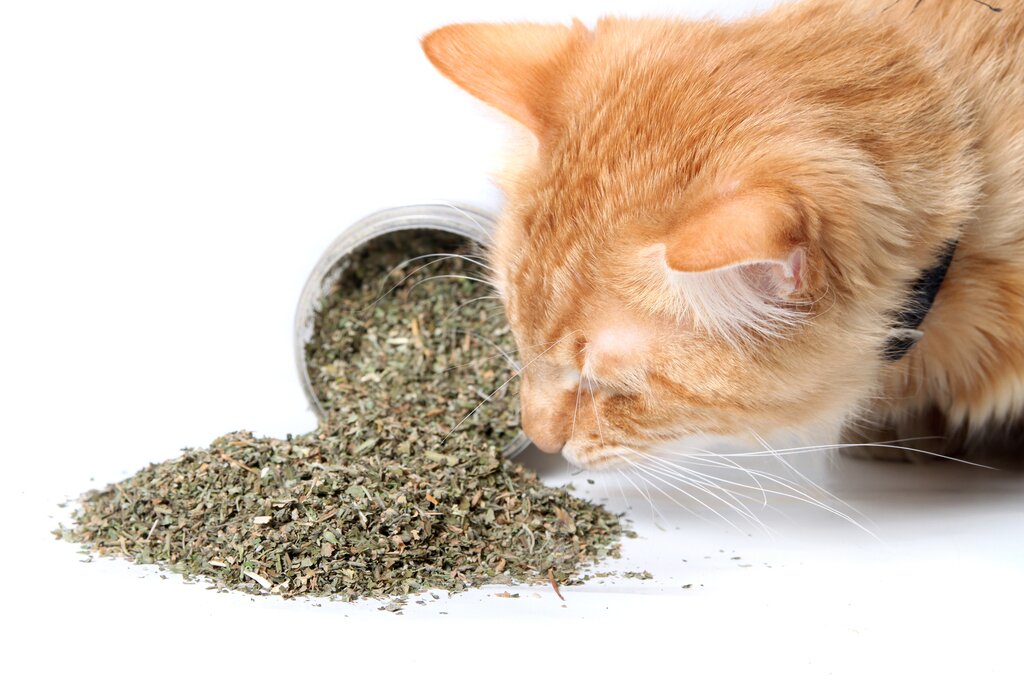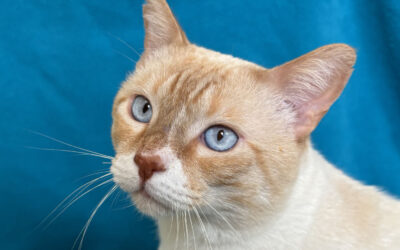Dear Ms. Kitty,
Is catnip safe for my cats? I heard that it could cause hallucinations and aggression. I’d like to try it to get my cat more active, but don’t want to turn my cat mean.
– Happy in Hanover
Dear Happy,
Catnip is a member of the mint family of herbs and can enrich your cat’s life. It’s usually a safe plant to give your cats, but you may want to see how they react at first. It has a chemical called nepetalactone that triggers a euphoric response in the brains of susceptible cats.


Cats typically respond by rolling or rubbing, and may bite and kick a toy with catnip stuffing. The effects of catnip are short-lived, usually about 5 to 15 minutes. Not all cats react to catnip, but around two-thirds of cats have an inherited response to it. Kittens do not usually respond until they are about 6 months old.
Your cats’ reaction will depend on whether they sniff or eat the herb. Sniffing produces a stimulant effect, while ingesting has a sedative effect. You can experiment with different forms of catnip. Some products are fresher and more potent than others. Some cats enjoy dry herbs and some like the fresh plant.
Catnip will not turn your cat mean, but some cats can temporarily get more aggressive when stimulated so watch to see how your cat responds first.
If your cat tends to get puffed up with a little nip, consider separating him while he imbibes to avoid conflicts between cats. That way everyone in your house will have a better time until it wears off.
Some catnip toys have just a pinch of herb in with the stuffing while some, like the Yeoww brand, are stuffed with all catnip. You can experiment and offer catnip toys, sprinkle dry catnip on a scratcher or offer fresh leaves.


Some of the best local catnip is available through our friends at Colorado Kitty Pot, where the profits go to helping pets in need through Harley’s Hope. Your cat will let you know what is preferred. Storing cat toys in a container with more catnip can make them extra exciting when you rotate them back out for playtime.
If your kitty happens to be a catnip non-responder, consider offering silver vine, Tatarian honeysuckle or valerian root instead. It is easy to find high quality herbs and herb blends to include everyone in the fun. Look for natural, organic products that come from North America to enrich your cats’ experience.
If you find that your cat reacts strongly, you can avoid catnip and offer cat grass instead. This is a non-stimulating herb and can be grown from oat, wheatgrass, rye or barley. Cat grass will typically be viable for about two to three weeks. It can last longer if watered from the bottom and refrigerated overnight.
Catnip will not respond well to refrigeration; however, catnip can live for a long time if kept from getting root-bound. It is best to limit access to these plants until your cats learn to control the amount they eat.
If you plant catnip outdoors it will spread, so containers are a helpful way to control the plant. You can harvest fresh leaves for your cat to enjoy or dry the plant and store in a sealed container. But remember, outdoor catnip can also attract roaming cats which can be stressful for indoor cats, so consider that risk.
Catnip, cat grass, or even sprouted sunflower seeds can offer a variety of nutrients and enrichment for cats, especially indoor-only cats. Offering these plants can distract them from chewing on house plants which can be toxic.
Fortunately, catnip is neither harmful nor addictive for cats, and most kitties enjoy interacting with these natural herbs from your own dispensary!

Sara Ferguson is the Director of Happy Cats Haven and Carole Galloway is the owner of Colorado Cats Boarding. Ask Ms Kitty supports cat behavior consulting offered on our website through our Helpline.




